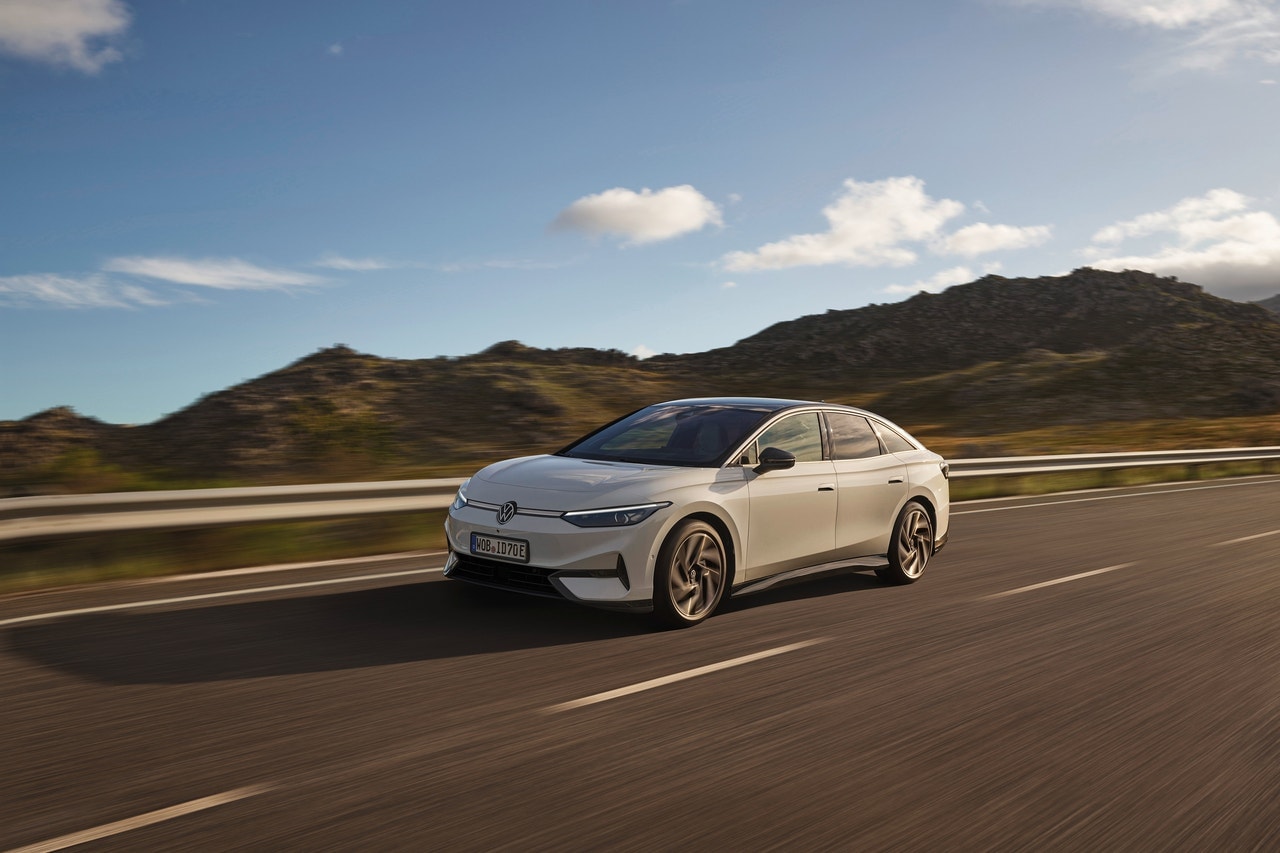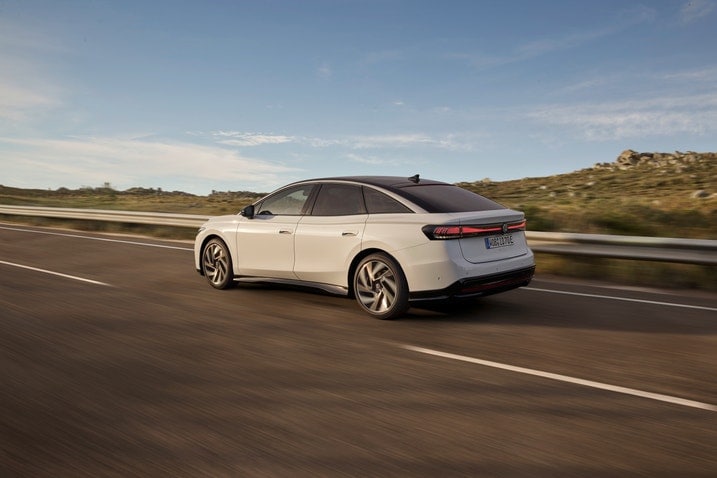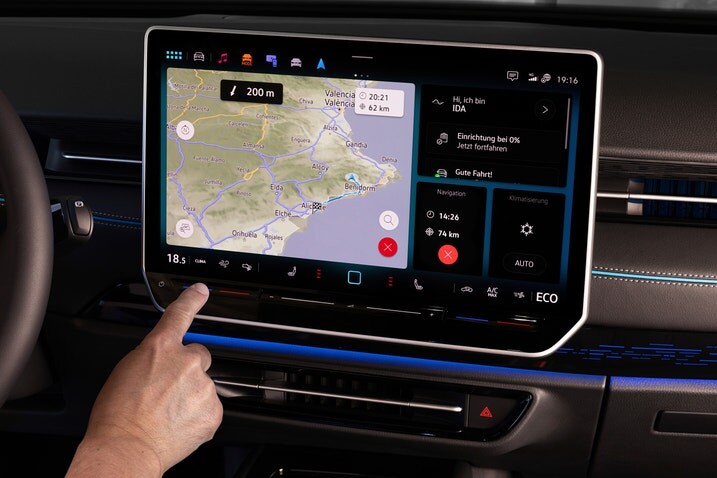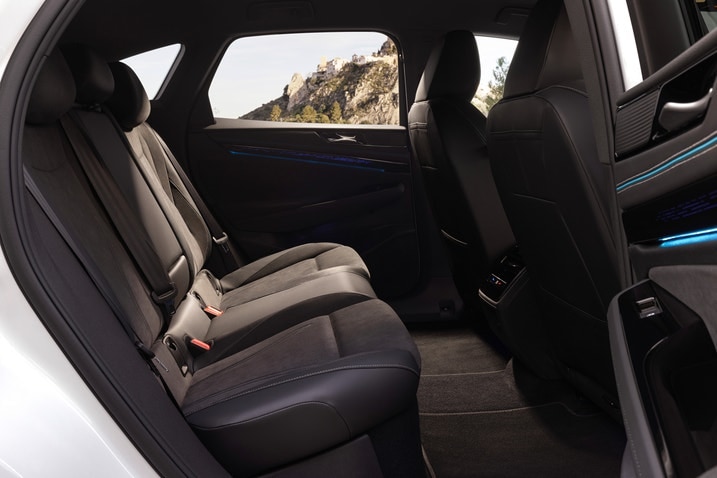- The new ID.7 electric sedan gets a user-friendly infotainment system.
- The augmented reality navigation system can be distracting.
- Audio and climate controls are finally backlit!
Driven: The 2025 Volkswagen ID.7 Goes After the Everyday EV Driver
Even the single-motor version is quick!
Am I Ready for an EV?
- EV ownership works best if you can charge at home (240V outlet) This typically means a 240V home installation, or other places your car is parked for several hours each day. Don't expect a regular household outlet (120V) to suffice.
- Adding a home charging system is estimated to cost $1,616 in This is an estimate for your area. Using your address and the answers you provide, Treehouse can provide a more accurate price.
- Edmunds is partnering with Treehouse, an independent provider of home EV installation services. Learn more Edmunds customers receive a 10% installation discount and 4% smart charger discount. Discount excludes permit, hosted inspection, and load management devices. Valid for 30 days.
If you’re looking for an all-electric sedan, you’ve got quite a few choices. You could go for the executive four-door such as a the Mercedes-Benz EQE or EQS, Audi e-tron GT or BMW i7. Want to go fast? Take the quick route with a Lucid Air Sapphire, Tesla Model S Plaid, Porsche Taycan Turbo or Audi RS e-tron GT. However, if you’re looking for something that is a bit more affordable and easier to drive on the daily, your options get a bit more constrained.
Volkswagen looks to fill in that gap with the upcoming ID.7. On a quick drive in a camouflaged model at the IAA Mobility auto show in Munich, Germany, we got to sample the ID.7 and its new infotainment system, test its acceleration and top speed, and get a glimpse of the new augmented reality navigation setup.
Impressions from the autobahn
My tester is a rear-wheel-drive ID.7, although Volkswagen will also offer an all-wheel-drive version with a higher output. In all, 282 horsepower and just over 400 lb-ft of torque are going to these rear wheels, with electrons stored in an 82-kWh battery with 77 kWh of usable capacity. On the generous WLTP European test cycle, Volkswagen says the ID.7 gets 435 miles of range, but expect that number to decrease when the EV is rated by the EPA. As for charging, the ID.7 can accept up to 200 kW of power at a DC fast-charging station.
I get a brief stint on Germany’s autobahn where I’m allowed to let the ID.7 stretch its legs. The acceleration doesn’t quite throw me back in my seat, but it’s still pretty fun. Before I know it, I’m cruising in the fast lane at a smidge over the car’s alleged top speed of 180 kilometers per hour. My speed is right around 114 mph so I still have to keep an eye out for super-fast Porsches and the like, but knowing I’m not going to get pulled over is intoxicating.
As I take an exit off the ‘bahn, I put the ID.7 into B mode to feel out the brake regeneration. Lift off the throttle, and the car slows without my having to touch the mechanical brakes. I glide to an almost-stop at the intersection, but I wish Volkswagen gave drivers different levels of regen and offered one-pedal driving. It’s great to stuff as many electrons as I can back into the battery simply by lifting off the accelerator, and driving in stop-and-go traffic is much easier with a one-pedal option.
I don’t get a ton of time on the backcountry roads outside of Munich, but it’s enough to introduce me to the ID.7's adaptive damping control system, called Dynamic Chassis Control, or DCC. Here, Comfort mode is very soft, like piloting a giant La-Z-Boy chair through the turns, while Sport mode firms things up considerably. The steering in this mode is appreciably quick with enough feedback to satisfy, but we really want to get the ID.7 on our home turf and spend more time behind the wheel.
New infotainment, who dis?
The ID.7 features the same, improved infotainment system seen in the 2024 ID.4 and is better for it. Here the screen sits at 15 inches, and the interface is much more intuitive with quicker response times than we’ve ever experienced in a Volkswagen before. There's no lag, whether you pinch and zoom in the navigation or are just browsing through the many options screens. Good job, VW!
The center section of the screen can display customizable tiles as well as access navigation, driver assistance features or the myriad apps included with the car. There is a narrow static bar at the top where drivers can customize shortcuts to their favorite infotainment functions. Spotify is just one tap away, y’all. There is also a permanent icon that takes me to all the apps as well as one for vehicle functions. On the bottom is another static bar with most, but not all, climate controls.
If you want to change the direction of airflow, you have to go into the infotainment system. It’s not necessarily the worst thing in the world, but tapping the Climate button and then dragging your finger along the screen takes up more of my attention and time than just manually adjusting the vents. Why manufacturers do this is beyond me. I never thought it was a problem that needed to be solved in the first place.
What did need to be solved, however, was Volkswagen’s use of slider buttons for temperature and volume control. In the 2021-2023 ID.4, these were cumbersome to use and were not backlit. Using them in the dark was always a hit-or-miss proposition. Thankfully, the ID.7 has sliders that are visible at night and are much less persnickety.
However, if persnickety is what you’re looking for, simply try to roll down the rear windows. Instead of each window having its own switch, there is only one switch for the right side, one for the left, and a switch labeled Rear. Controlling the rear window means remembering to hit that Rear switch before you hit the switch for the actual windows. In the end, Volkswagen only saved using one switch. The hassle is hardly worth it, in my opinion.
Hello, IDA
I’ve been slow to come around to voice assistants in vehicles, but Volkswagen’s IDA can recognize natural language and makes the whole moving-the-HVAC-vents-on-the-screen thing less annoying. I tell her my hands are cold and she turns on the heated steering wheel and redirects the vents toward my hands. If I ask her to show me the stars, she turns the electrochromic sunroof transparent so passengers can gaze at the constellations. She can also give me the latest news, switch up the ambient lighting and tell a really bad joke. I try to get her to diss other manufacturers, but when I ask her what she thinks of Mercedes-Benz, she merely reports that Car Talk calls it a luxury automobile. Quite the diplomat, that IDA.
Oh, and if you hate the name IDA, or if your name is Ida, you can change it to whatever you want.
A small digital rectangle behind the wheel serves as a gauge cluster of sorts. The information displayed is just what I need — nothing more, nothing less. The speed is shown in the largest font, but I can also see my state of charge, current speed limit and which driving aids are active.
There is more information in the head-up display, including a new augmented reality overlay for navigation. An arrow seems to be floating over the intersection where the nav system says I should turn. As I approach the corner, the arrow gets bigger, giving the effect that it is moving toward me. This is a feature we’ve seen before on luxury cars from Mercedes-Benz and we think it can be useful if done correctly. However, here the overlay flashes every 50 meters or so as I approach the turn and I find my attention is dedicated to the flashing, not the road ahead. I definitely want to spend more time with this system to see how quickly I get used to it.
Recalculating … badly
The navigation system seems to have a hard time recalculating my route after I miss a turn. After I make a U-turn it routes me straight past the missed corner, putting me on a completely different path back to the IAA Mobility show. Volkswagen had programmed in a series of waypoints so that I would get to experience both autobahn and back roads, but the ID.7 just wants to head back to the autobahn. I get it, speed is fun, but it’s not the way I’m supposed to go. Wireless Apple CarPlay and Android Auto are both here for the more reliable Google Maps.
Ah well, I guess it’s time to just crank up the optional massage function and ignore the GPS. I love the heating element — yes, even in the summer I am game for some hot cross buns — but ventilation is here too. In fact, the seats have temperature and moisture sensors and can tell if you’ve just gotten behind the wheel after sweating up a storm in the hot German sun. Volkswagen says running the heating and cooling elements at the same time will dry out damp clothing. I happen to be sweat-free on this press trip, but I can see how this feature would be incredibly awesome to have in warmer and humid climates.
Edmunds says
While we really want to spend more time in the ID.7 before we pass final judgment on the midsize electric sedan, at first blush it looks to make quite a splash in the marketplace. The powertrain with all that electric torque is smooth, DCC delivers a comfortable or sporty ride, and the infotainment system is intuitive and easy to use.
Volkswagen hasn’t released pricing, but we expect the 2025 ID.7 to start around $50,000. It should be available late next summer.











.jpg) by
by